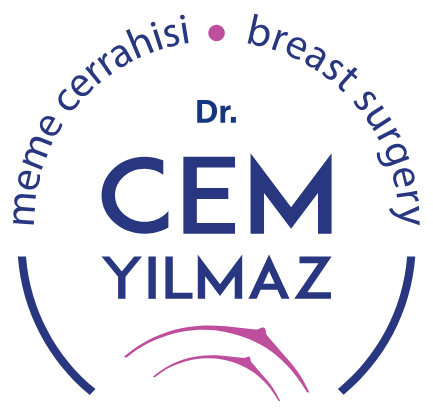Saturday: 08:00 - 14:00
Breast Reconstruction
What is Breast Reconstruction?
Breast reconstruction is performed to restore a breast lost due to breast cancer to its natural state. Breast reconstruction is not cosmetic surgery, but reconstruction. In other words, it replaces a limb lost due to disease. Thanks to new advances in medicine, surgeons can now create breast structures that closely resemble natural breasts. In developed countries with this understanding, breast cancer treatment teams include both plastic and reconstructive surgeons and general surgeons who specialize in this field.
Breast Reconstruction Improves Women's Self-Confidence, Quality of Life, and Psychological Strength. It provides.
For most women with cancer, the results of breast reconstruction surgery mean a new beginning, a stronger sense of belonging, and happiness. These patients' relationships with their families and friends, as well as their sex lives, become more harmonious. It also provides significant moral and psychological support during cancer treatment. This helps to better manage the disease.
Breast Reconstruction Surgeries
Breast reconstruction can be performed in the same session as breast cancer surgery (concurrent reconstruction), or in a separate session (delayed reconstruction) after adjuvant (postoperative radiotherapy, chemotherapy) treatments are completed.
Concurrent breast reconstruction is currently the more preferred technique due to its better psychological outcomes. This eliminates the need for a second surgical procedure. This may not always be the best option. For example, if postoperative radiotherapy is likely, it would be appropriate to postpone reconstruction, particularly with synthetic implants, to a later date.
Breast reconstruction should be a safe procedure for the patient. There should be no significant functional impairment, complication rates should be minimal, and any delay in initiating adjuvant treatments after simultaneous reconstruction should be avoided. Regardless of the reconstructive method used, the primary goal is to: To achieve good symmetry with the other breast.
Different Methods Used for Reconstruction:
- Only synthetic implants (silicone implants, those with a silicone outer shell and a saline-filled inner shell)
- Procedures using both the implant and the patient's own tissue
- Procedures using only the patient's own tissue
Reconstruction with Only Synthetic Prosthetics
Two types of prosthetics are used for this purpose:
- Temporary tissue expanders
- Permanent fixed-volume breast Implants
Tissue expanders are used to add elasticity to the breast skin before the placement of a permanent implant. They are temporarily inflated by injecting increasing amounts of saline into the chamber. When the time comes, they are removed and a permanent implant is placed in the resulting pouch, or some special types of tissue expanders can be left in place as permanent implants.
Fixed-volume permanent implants are generally silicone-based. Recent studies have shown that the use of silicone for this purpose is safe.
The use of synthetic implants alone for reconstruction is preferred by patients who do not wish to undergo surgery on the back or abdomen.
Radiation therapy to the chest wall Reconstruction with synthetic implants is not a good option for those who have had breast cancer or are likely to undergo postoperative radiation therapy.
In both tissue expander and permanent implant reconstruction procedures, the prosthesis is placed under the anterior chest wall muscles.
Helpful Information About Breast Reconstruction Surgeries
Nipple and Areola Reconstruction
Several surgeries may be required to achieve a natural breast appearance. The first, the creation of the breast tissue, is more complex. The second, the creation of the nipple and areola (the dark area around the nipple), is easier. These procedures are even performed under local anesthesia. The nipple is made from tissue in the area. The dark area around it can be tattooed, as can the opposite nipple.Skin taken from the breast or groin can also be used.
Achieving Symmetry Between Breasts
In cases of unilateral breast reconstruction, the reconstructed breast is not expected to be symmetrical with the opposite breast at the end of the surgery. To achieve symmetry between the breasts, some procedures may be performed on the opposite breast. These include reduction, lift, or augmentation of the opposite breast.
After Breast Surgery
Postoperative pain can be relieved with medication. A hospital stay of 1-2 days may be required if reconstruction was not performed, and 2 to 5 days if reconstruction was performed. Patients can be discharged within one day if they underwent breast-conserving surgery, and within one to two days if they underwent mastectomy. If drains were placed to prevent fluid accumulation (seroma), these will be removed within a few days to one to two weeks after surgery, depending on the type of surgery.
Return to Daily Activities
The time required to return to daily activities varies depending on the extent of the surgery, but generally ranges from a few days to four weeks. Hospital stays are longer for patients who undergo autologous (self-tissue) reconstruction compared to breast reconstruction with prosthetics.
Even if patients have drains, they can prevent water from entering the drain and bathe as normal after two days. The dressings around the drain should be changed after bathing. There is no harm in wetting the surgical wounds with water after two days. However, harsh irritation of the wound should be avoided.
No special diet is recommended for a few hours after the surgery.
Reconstruction does not restore normal sensation, but some sensation may improve over time. Surgical scars may fade over a period of one to two years. However, they will not disappear completely.
Procedures Using Implants and the Patient's Own Tissue Together
The most commonly used musculocutaneous flap for this purpose is the latissimus dorsi muscle on the back. The permanent implant is placed over the anterior chest wall muscles and under the latissimus dorsi musculocutaneous flap, which is moved from the back.
Especially in cases where there is a significant defect in the breast skin flap after a mastectomy, using implants alone will not be sufficient and will not provide a good cosmetic result. Since it cannot be left open, reconstruction with a musculocutaneous flap will be necessary.
Good cosmetic results can be achieved in medium and large breasts. Care is taken to keep the incision on the back below the bra line. However, if necessary, Depending on the amount of musculocutaneous flap required, the incision may be slightly larger.
Procedures Using Only the Patient's Own Tissue
Breast reconstruction using the patient's own tissue (reconstruction with autologous tissue) is a procedure performed for patients who do not wish to use synthetic prostheses for reconstruction.
Autologous tissue flaps commonly used for this purpose are the latissimus dorsi musculocutaneous flap (LD flap – back muscle and skin) and the transversus rectus abdominis musculocutaneous flap (TRAM – anterior abdominal wall muscle, fat, and skin).
If the breast size is small, the LD flap alone may be sufficient, but if the breast tissue is in the middle or In patients with large abdominal distension, the TRAM flap may provide a better cosmetic result.
The incision scar in the LD flap technique is on the back, while the TRAM flap incision is in the lower abdomen. Precautions may need to be taken to prevent a defect in the anterior abdominal wall and the development of a hernia after the TRAM flap.


